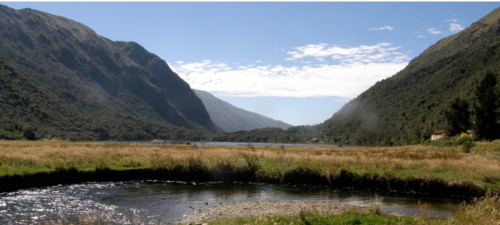2024-08-12 ブラウン大学

Brown-led researchers highlight 16,000 years of climate history in the tropical Andes, which includes areas like the Laguna Llaviucu in Cajas National Park in Ecuador. Photos by Mark Bush
<関連情報>
最後の氷河期以降の熱帯アンデスの気候変動 Tropical Andean climate variations since the last deglaciation
Boyang Zhao, James M. Russell, Ansis Blaus, +2, and Mark B. Bush
Proceedings of the National Academy of Sciences Published:August 12, 2024
DOI:https://doi.org/10.1073/pnas.2320143121
Significance
Tropical South America is a center of biodiversity and is under pressure from ongoing climate change. Understanding tropical South America’s climate history can provide valuable insight into the water cycle, ecosystems, and future climate change, yet past temperature changes are not well-known. We reconstructed temperature and rainfall since ~16,800 y ago in the tropical Andes Mountains. In addition to warming driven by rising atmospheric CO2 concentrations, we observe rapid temperature changes linked to changes in the deep ocean circulation. Given the projected slowing of the Atlantic Ocean circulation in the coming decades, our findings suggest that Amazonia’s ecosystems may be challenged by rapid temperature changes superposed on warming from sharply increasing atmospheric CO2.
Abstract
Global warming during the Last Glacial Termination was interrupted by millennial-scale cool intervals such as the Younger Dryas and the Antarctic Cold Reversal (ACR). Although these events are well characterized at high latitudes, their impacts at low latitudes are less well known. We present high-resolution temperature and hydroclimate records from the tropical Andes spanning the past ~16,800 y using organic geochemical proxies applied to a sediment core from Laguna Llaviucu, Ecuador. Our hydroclimate record aligns with records from the western Amazon and eastern and central Andes and indicates a dominant long-term influence of changing austral summer insolation on the intensity of the South American Summer Monsoon. Our temperature record indicates a ~4 °C warming during the glacial termination, stable temperatures in the early to mid-Holocene, and slight, gradual warming since ~6,000 y ago. Importantly, we observe a ~1.5 °C cold reversal coincident with the ACR. These data document a temperature change pattern during the deglaciation in the tropical Andes that resembles temperatures at high southern latitudes, which are thought to be controlled by radiative forcing from atmospheric greenhouse gases and changes in ocean heat transport by the Atlantic meridional overturning circulation.



